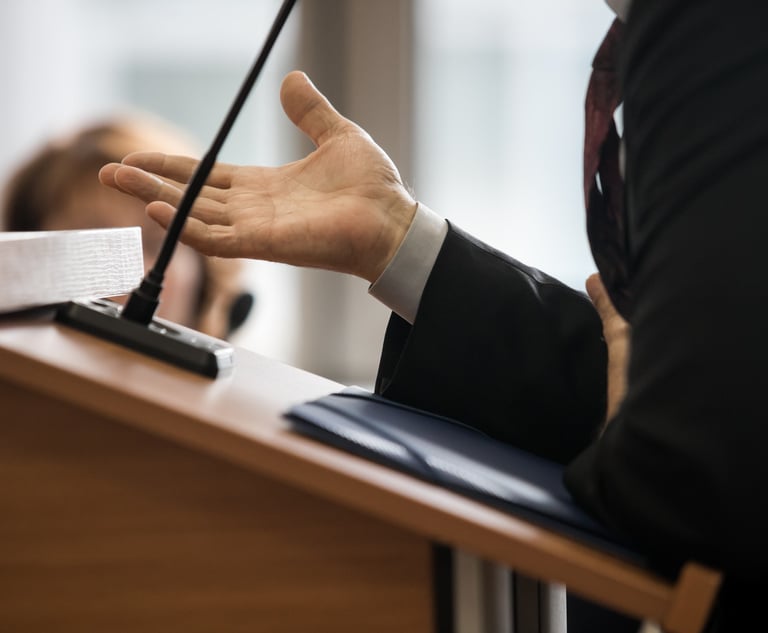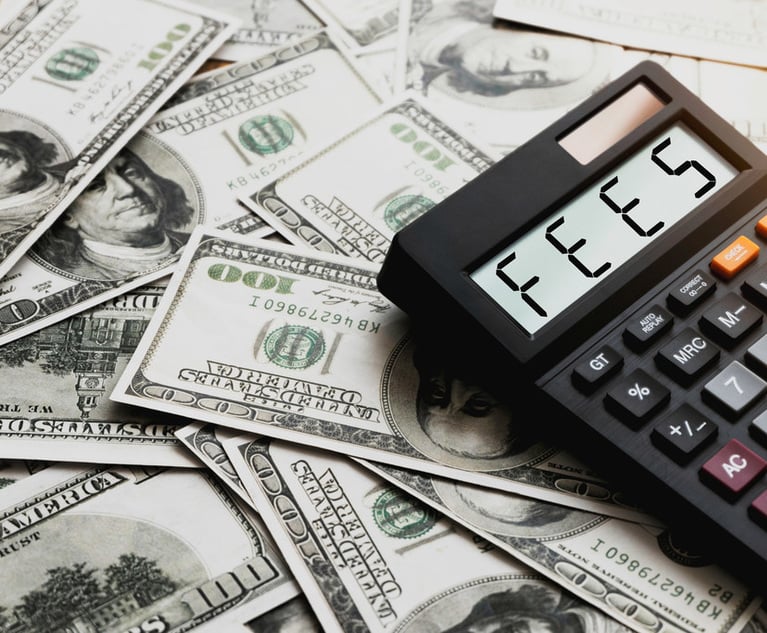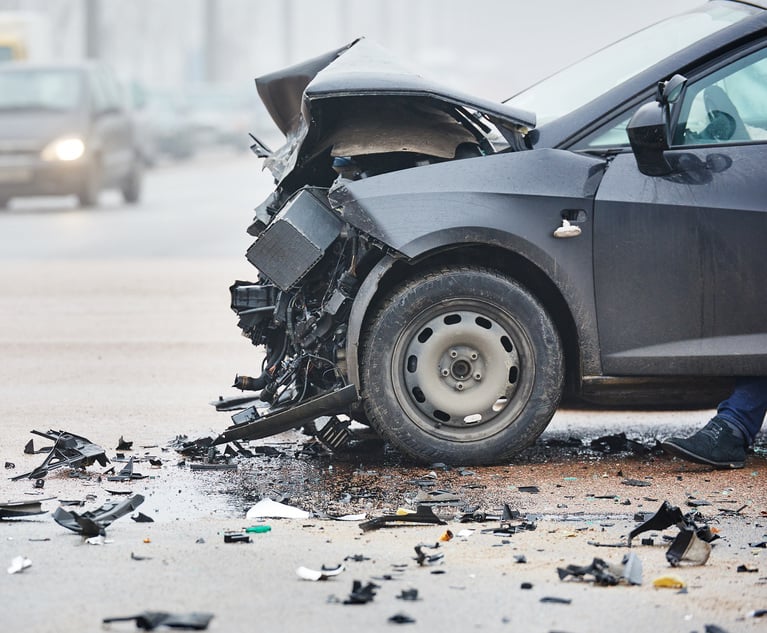Amending the Dram Shop Act Would Reduce Wrong Way Crashes
The Connecticut Dram Shop Act provides a remedy to some who are injured as a result of overservice, albeit at the cost of precluding a common law action for negligence which the statute bars. But there are weaknesses with the statute, the editorial board writes.
March 28, 2024 at 05:53 PM
4 minute read
State and Local GovernmentThe rash of wrong-way crashes on Connecticut highways has led to proposed fixes including modern technology in the form of warning lights and more noticeable signs. The General Assembly is also considering lowering the blood alcohol concentration (BAC) to prove driving while intoxicated from .08 to .05. While that may be a good idea for other reasons, it is not likely to reduce the most dangerous wrong-way crashes. Indeed, the General Assembly is ignoring what might be a very effective way of reducing drunk driving fatalities—eliminating the requirement of showing "visible intoxication" for Dram Shop Act cases.
When we read about another wrong way crash, it is no surprise that the collision was at 1 or 2 a.m. That's not a coincidence. That's when bars close. Indeed, a study by the National Transportation Safety Board found that nearly three-quarters of wrong-way drivers involving fatalities were under the influence of alcohol. Nearly 60% of wrong-way drivers causing a fatality had a BAC of .15 or higher. Only 10% had a BAC between .08 and .15, and only 2% had a BAC under .08. (29% tested at 0.0 BAC.) Ten percent had been convicted of drunk driving in the three years before the fatal collision. The overwhelming majority of crashes are at night.
This content has been archived. It is available through our partners, LexisNexis® and Bloomberg Law.
To view this content, please continue to their sites.
Not a Lexis Subscriber?
Subscribe Now
Not a Bloomberg Law Subscriber?
Subscribe Now
NOT FOR REPRINT
© 2025 ALM Global, LLC, All Rights Reserved. Request academic re-use from www.copyright.com. All other uses, submit a request to [email protected]. For more information visit Asset & Logo Licensing.
You Might Like
View All
DOJ, 10 State AGs File Amended Antitrust Complaint Against RealPage and Big Landlords
4 minute read
New Teeth for Anti-SLAPP Statute? Absolute Immunity for Union Grievance Proceedings
2 minute read
Judge Reduces Attorneys' Award in Boston Sidewalk Settlement for Repetitive Billing
4 minute readTrending Stories
Who Got The Work
J. Brugh Lower of Gibbons has entered an appearance for industrial equipment supplier Devco Corporation in a pending trademark infringement lawsuit. The suit, accusing the defendant of selling knock-off Graco products, was filed Dec. 18 in New Jersey District Court by Rivkin Radler on behalf of Graco Inc. and Graco Minnesota. The case, assigned to U.S. District Judge Zahid N. Quraishi, is 3:24-cv-11294, Graco Inc. et al v. Devco Corporation.
Who Got The Work
Rebecca Maller-Stein and Kent A. Yalowitz of Arnold & Porter Kaye Scholer have entered their appearances for Hanaco Venture Capital and its executives, Lior Prosor and David Frankel, in a pending securities lawsuit. The action, filed on Dec. 24 in New York Southern District Court by Zell, Aron & Co. on behalf of Goldeneye Advisors, accuses the defendants of negligently and fraudulently managing the plaintiff's $1 million investment. The case, assigned to U.S. District Judge Vernon S. Broderick, is 1:24-cv-09918, Goldeneye Advisors, LLC v. Hanaco Venture Capital, Ltd. et al.
Who Got The Work
Attorneys from A&O Shearman has stepped in as defense counsel for Toronto-Dominion Bank and other defendants in a pending securities class action. The suit, filed Dec. 11 in New York Southern District Court by Bleichmar Fonti & Auld, accuses the defendants of concealing the bank's 'pervasive' deficiencies in regards to its compliance with the Bank Secrecy Act and the quality of its anti-money laundering controls. The case, assigned to U.S. District Judge Arun Subramanian, is 1:24-cv-09445, Gonzalez v. The Toronto-Dominion Bank et al.
Who Got The Work
Crown Castle International, a Pennsylvania company providing shared communications infrastructure, has turned to Luke D. Wolf of Gordon Rees Scully Mansukhani to fend off a pending breach-of-contract lawsuit. The court action, filed Nov. 25 in Michigan Eastern District Court by Hooper Hathaway PC on behalf of The Town Residences LLC, accuses Crown Castle of failing to transfer approximately $30,000 in utility payments from T-Mobile in breach of a roof-top lease and assignment agreement. The case, assigned to U.S. District Judge Susan K. Declercq, is 2:24-cv-13131, The Town Residences LLC v. T-Mobile US, Inc. et al.
Who Got The Work
Wilfred P. Coronato and Daniel M. Schwartz of McCarter & English have stepped in as defense counsel to Electrolux Home Products Inc. in a pending product liability lawsuit. The court action, filed Nov. 26 in New York Eastern District Court by Poulos Lopiccolo PC and Nagel Rice LLP on behalf of David Stern, alleges that the defendant's refrigerators’ drawers and shelving repeatedly break and fall apart within months after purchase. The case, assigned to U.S. District Judge Joan M. Azrack, is 2:24-cv-08204, Stern v. Electrolux Home Products, Inc.
Featured Firms
Law Offices of Gary Martin Hays & Associates, P.C.
(470) 294-1674
Law Offices of Mark E. Salomone
(857) 444-6468
Smith & Hassler
(713) 739-1250












